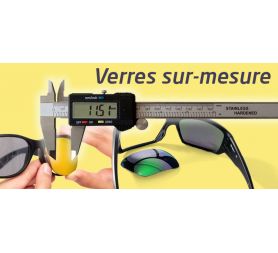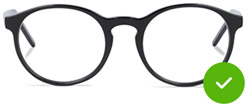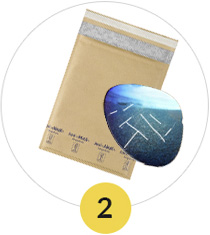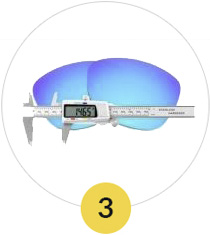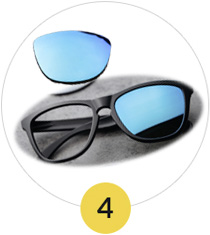FREE SHIPPING FOR ORDERS €50+
Sort by:
-
Custom sun lenses
Custom made polarized* sun lenses, compatible with all brands
How does it work, and how do I order my lenses?
Custom compatible solar or special lenses, tailor-made from your old lenses especially for you!
* Blue-block, Cristal, and Colorblind tints are not polarized
€49.00
100% CUSTOM SUN LENSES |
||||||||||||
|
||||||||||||
How do I change my lenses on a metal frame? |
||||||||||||
|
||||||||||||
|
||||||||||||
|
||||||||||||
|
||||||||||||
Once the workshop work has been completed,
|
||||||||||||
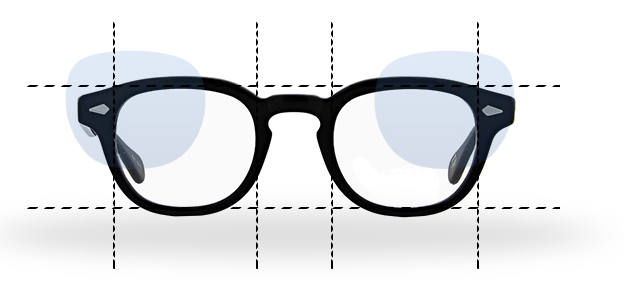 |
||||||||||||
|
|
||||||||||||
49.00€ |
||||||||||||
| Our guarantee and our full 14 day refund policy apply as for other glasses, if you are not satisfied. |
||||||||||||
Polarized eyeglass lenses offer several benefits, especially for people who spend a lot of time outdoors or are sensitive to glare. Here are some of the benefits of polarized eyeglass lenses:
- Glare reduction
- Improved visual comfort
- Better perception of contrasts
- Protection against UV rays
- Better visual clarity
Mauve photochromic polarized eyeglass lenses can offer several benefits for:
- People suffering from migraines
- Reduced glare and reflections
- Blue light filtering:
- Adaptability to changing brightness.
- Improved visual comfort
Green photochromic polarizing eyeglass lenses can offer several advantages in terms of visual contrast:
- Contrast enhancement
- Reduced glare and reflections
- Adaptability to changing brightness
- Increased visual comfort
Blue photochromic polarizing eyeglass lenses can offer several advantages in terms of visual comfort and aesthetics:
- Reduction of visual fatigue
- Protection against glare and reflections
- Adaptability to changing brightness
- Modern aesthetic
Anti-blue light coated eyeglass lenses, when combined with photochromic properties, can provide several sleep benefits:
- Blue light filtering
- Protection against visual fatigue
- Adaptability to changing brightness
Yellow photochromic eyeglass lenses can offer several specific benefits for driving:
- Improved contrast and visual clarity
- Reduced glare and reflections
- Adaptability to changing brightness
- Reduction of visual fatigue
Pink mirrored color blind eyeglass lenses may offer some specific benefits for color blind people, although this depends on the type and degree of color blindness each individual has. Here are some potential benefits:
- Contrast enhancement
- Reducing color confusion
- Light filtering
High contrast spectacle lenses offer several benefits for some people, particularly those who experience specific vision difficulties. Here are some of the potential benefits:
- Improved low light vision
- Emphasis on details
- Glare reduction
- Improved color contrast
- Help for certain vision problems
Polycarbonate eyeglass lenses offer several advantages over standard glass or plastic lenses:
- Lightness
- Impact resistance
- Scratch resistance
- UV protection
- Optical clarity
Sunglasses with replacement lenses can provide eco-friendly and responsible benefits:
- Sustainability
- Less waste
- Reduction in raw material consumption
- Recycling Options
- Promoting the circular economy
- Fight against waste and overconsumption


